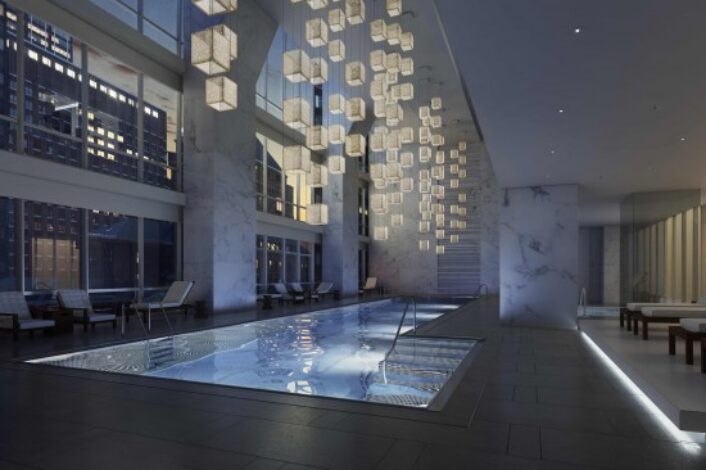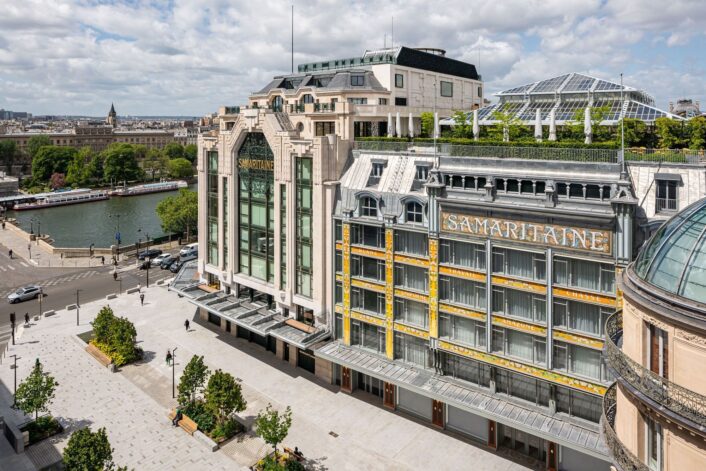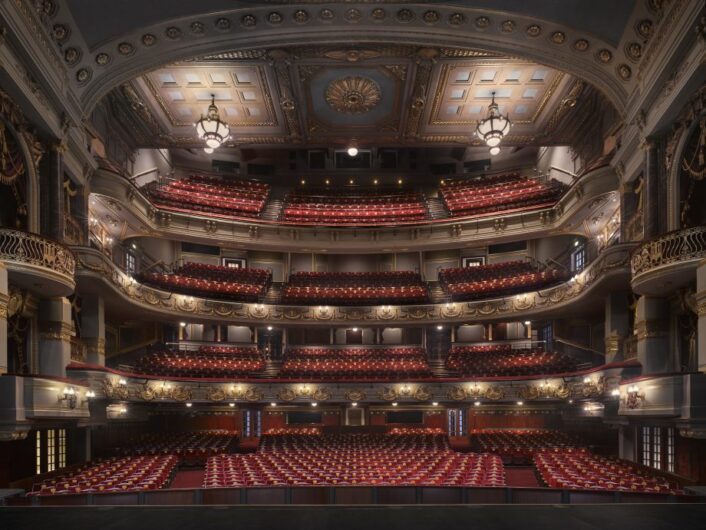Culture
Inside Tiffany & Co.’s Landmark renovation
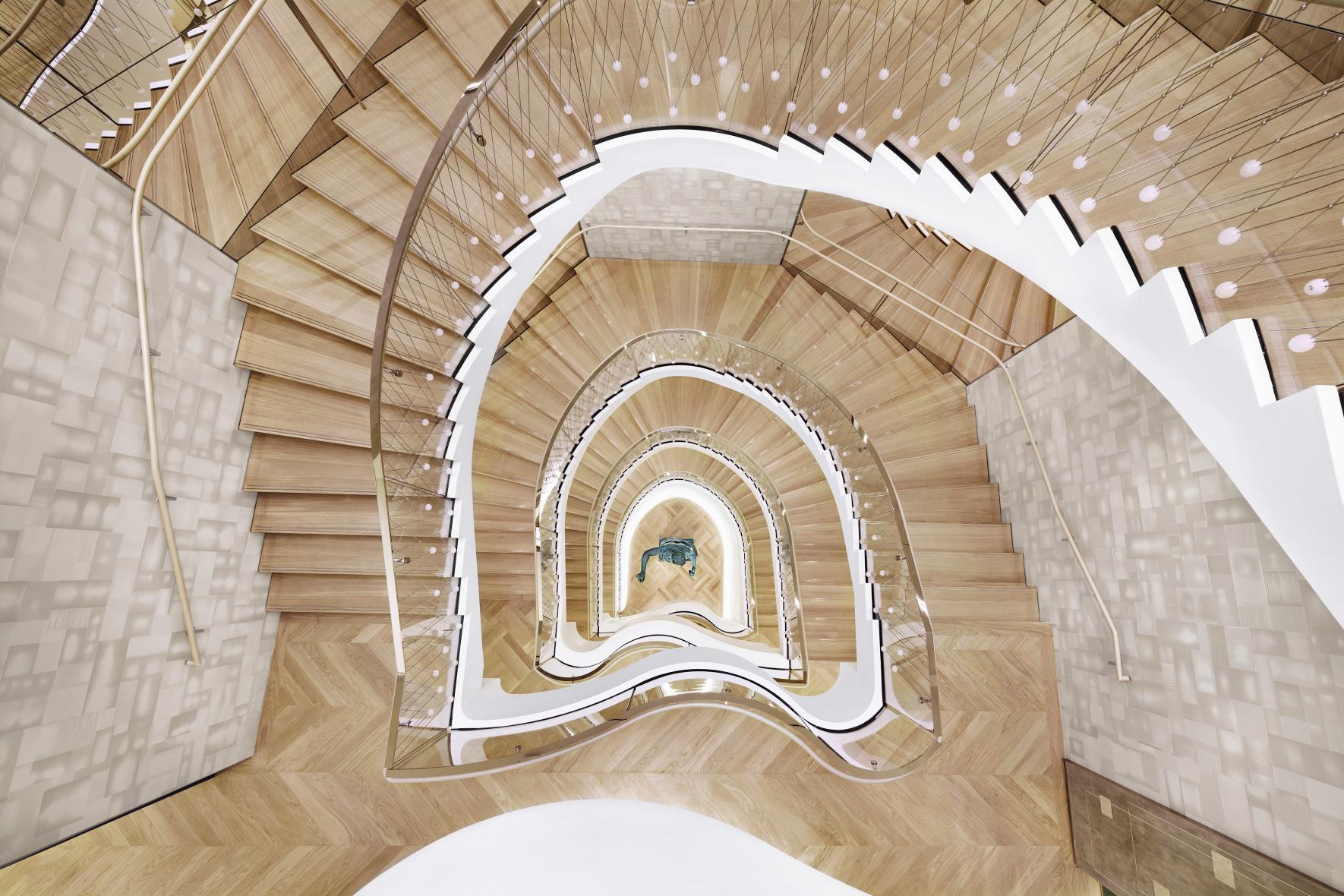
At the center of the store, a sculptural, spiral staircase connects floors three to eight. At the very bottom, a 12-foot-tall Daniel Arsham sculpture called “Bronze Eroded Venus of Arles” resides.
Image courtesy of: Tiffany & Co. (as featured in The Times)
When the store best known for little robin’s-egg blue boxes debuted its flagship store on the corner of 57th Street and 5th Avenue last spring, it wasn’t just the jewels inside that were the showstoppers. After three years of renovations, Tiffany & Co.’s new flagship location is hardly recognizable. Meant to be the crown jewel out of Tiffany’s 337 boutiques worldwide, this new contemporary space even has a name… Landmark.
The renovation was possible because of Peter Marino, a New York-based architect and art collector who has become LVMH Moet Hennessy Louis Vuitton’s “go-to” architect. Marino has previously been responsible for revitalizing boutiques for some of the world’s most luxurious brands including Dior, Hublot, and Fendi. Thus, it was only fitting that following the $15.8 billion acquisition of Tiffany & Co. in early 2021, LVMH brought in Marino to head up renovations at the iconic Fifth Avenue location.
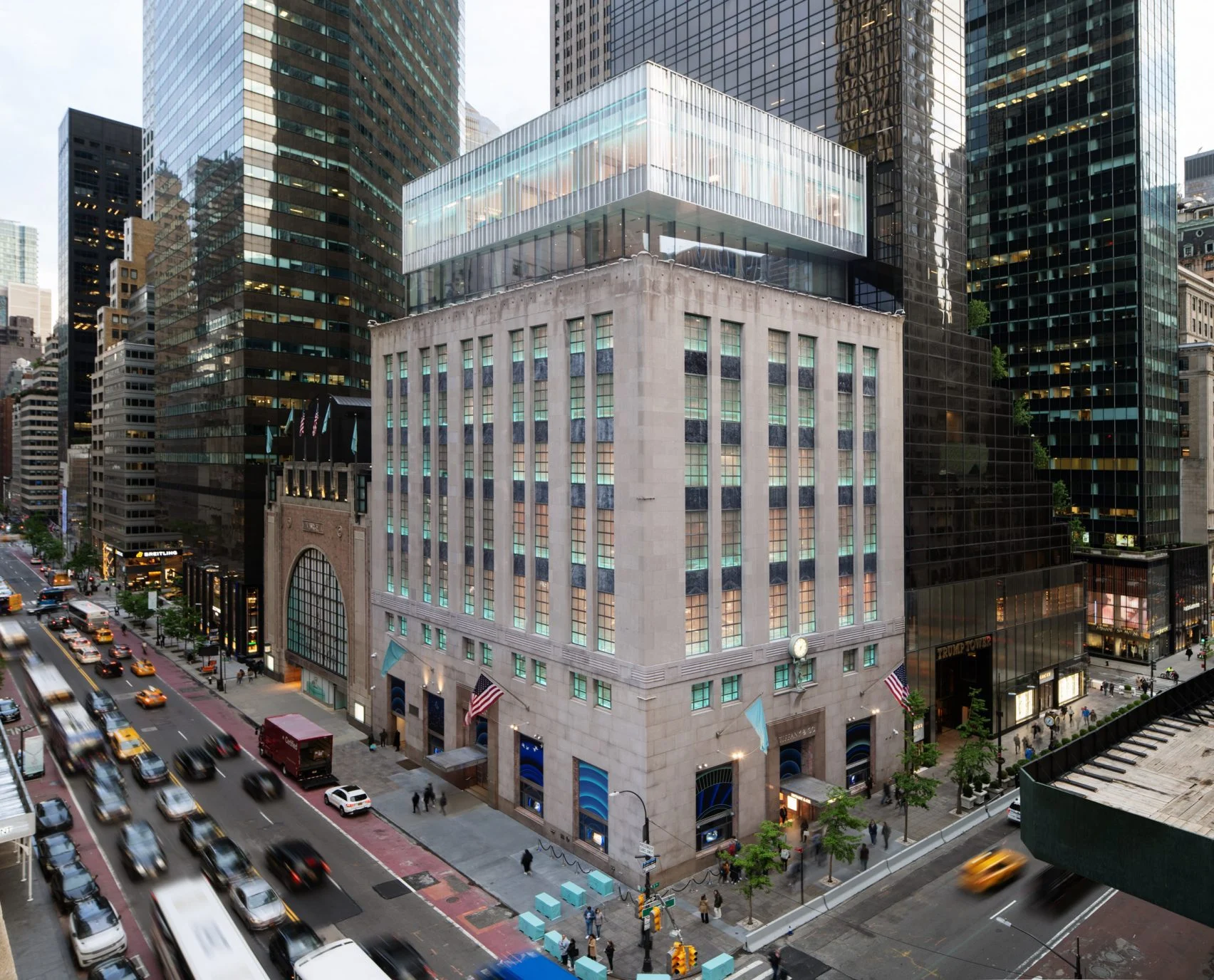
The three-story glass edition will hold the gallery and provide event spaces. OMA mentioned (courtesy of Dezeen), that the edition signifies “an evolving brand identity.”
Image courtesy of: loto+warner (as featured in Dezeen)
Marino reimagined literally every foot of the boutique’s enormous interior. The company has said that the renovation represents (courtesy of The Wall Street Journal article by Stephen Wallis), “‘by a lot’ the largest investment LVMH has made on a single store, overall and specifically for art.” Since the 2021 acquisition, there has been a big push to update existing Tiffany & Co. stores.
The exterior remained the same… the granite, marble, and limestone art deco facade at Cross & Cross’ seven-story 1940’s building. The familiar bronze Atlas clock, albeit refurbished and reinstalled, still watches over Fifth Avenue. However there is a new three-story glass extension that Shohei Shigematsu, from the architect firm of OMA, designed.
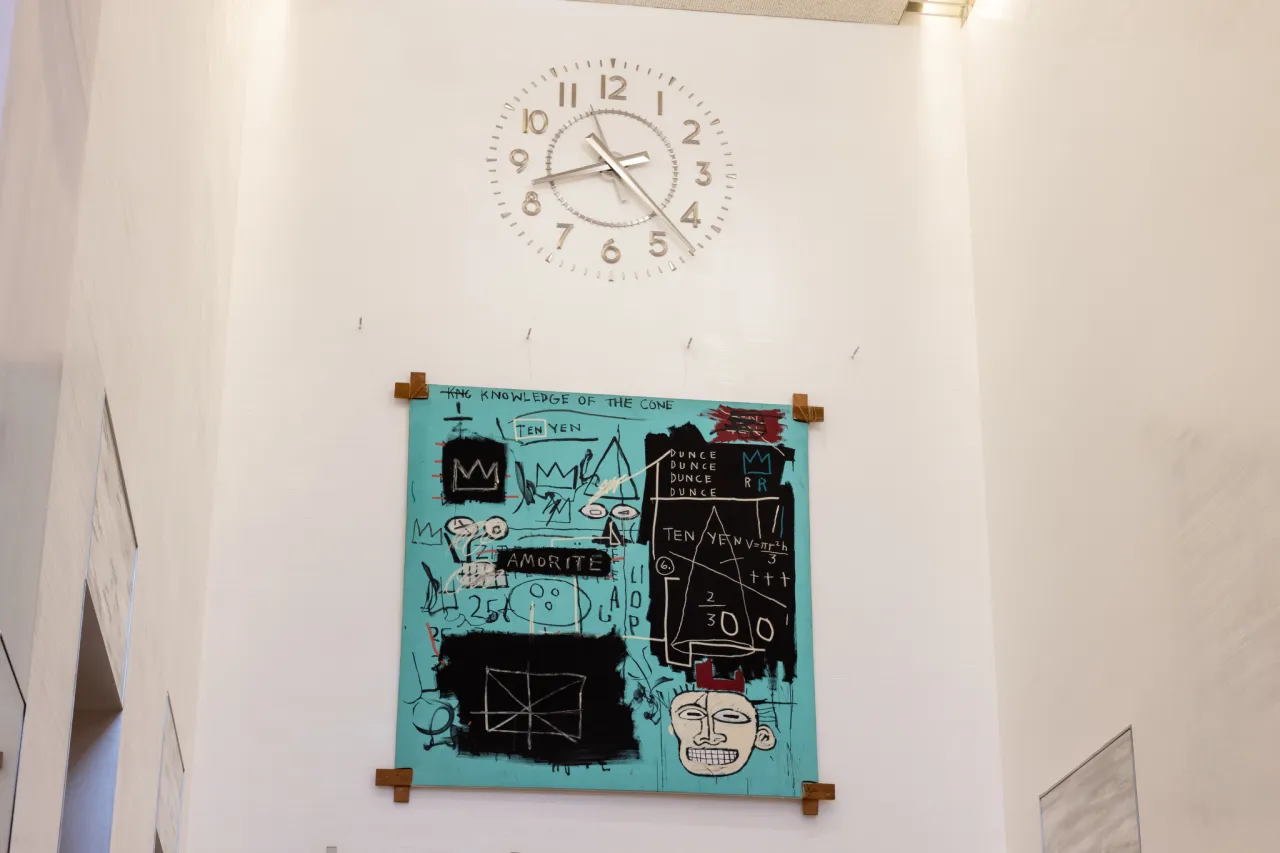
A Jean-Michel Basquiat, “Equals Pi” painting, owned by LVMH, hangs in the store’s main elevator bank. The painting was part of Tiffany & Co.’s 2021 campaign “About Love” with Beyonce and Jay-Z. Even with the distinctive color, there is no solid evidence that the painting was an ode to the luxury house; however Basquiat loved New York City, luxury, and jewelry. The specific color he used points to maybe this being Basquiat’s way of paying homage to Tiffany & Co.
Image courtesy of: Woman’s Wear Daily, photographed by: Sarah Jacobs
Inside however, it is a brand new building. The major difference, and a strategy LVMH considered in-depth, was art… both existing pieces specifically purchased for the flagship and commissioned works. The interior presents as a gallery of museum-worthy pieces from artists that include Damien Hirst, Julian Schnabel, and Jean-Michel Basquiat.
The pedigree of artists represented elevates the boutique to another level… Alexandre Arnault, executive vice president for product and communication (and Bernard Arnault’s son) consulted tirelessly with his father and Marino on these art acquisitions and commissions. Altogether, there are forty pieces of art across the ten floors. Alexandre Arnault said (courtesy of an article Options The Edge, first appearing in The Edge Malaysia), “We are proud to introduce our own art collection. It has been a passion project of mine over the past years. We have either worked directly with artists on some Tiffany-inspired commissions or acquired works that we felt belonged in our Landmark.”
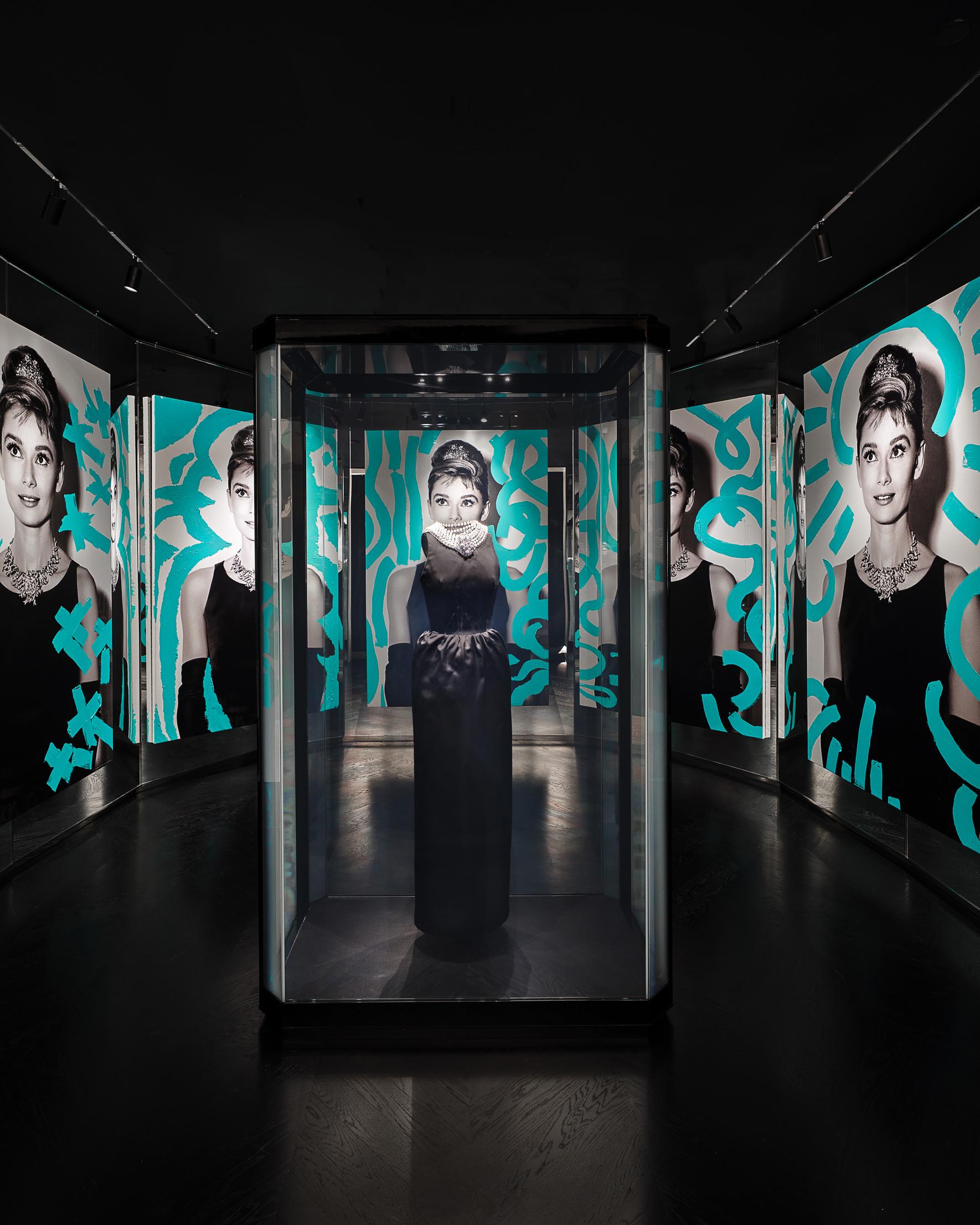
The interactive experience of “Breakfast at Tiffany’s.”
Image courtesy of: Tiffany & Co. (as featured in The Times)
The store originally opened in 1940, and it has not undergone any significant renovations since then. The store’s ground level measures at 8,400-square-feet and is anchored by an Elsa Peretti-inspired sculptural staircase. The column-less floor is (courtesy of The Times) “lit by a 22-foot-long ceiling light installation with glass fins said to evoke light beams shining through the facets of a diamond. Manhattan proper is not visible through any windows — instead enormous video screens from front to back and floor to ceiling project more than 33 million pixels of views of Central Park and the Manhattan skyline into the space; the iconic Schlumberger Bird on a Rock brooch flutters through the digital sky, the seasons will change through the year and when it rains or snows outside the screens will adjust in turn.”
The fifth floor is where the permanent “Breakfast at Tiffany’s” exhibition is shown; there viewers can watch relevant film footage, see a replica of Audrey Hepburn’s legendary dress, and read a hand-annotated script. The sixth floor houses the Blue Box Café where a Michelin-starred chef serves an “afternoon all day” menu amongst priceless artwork.
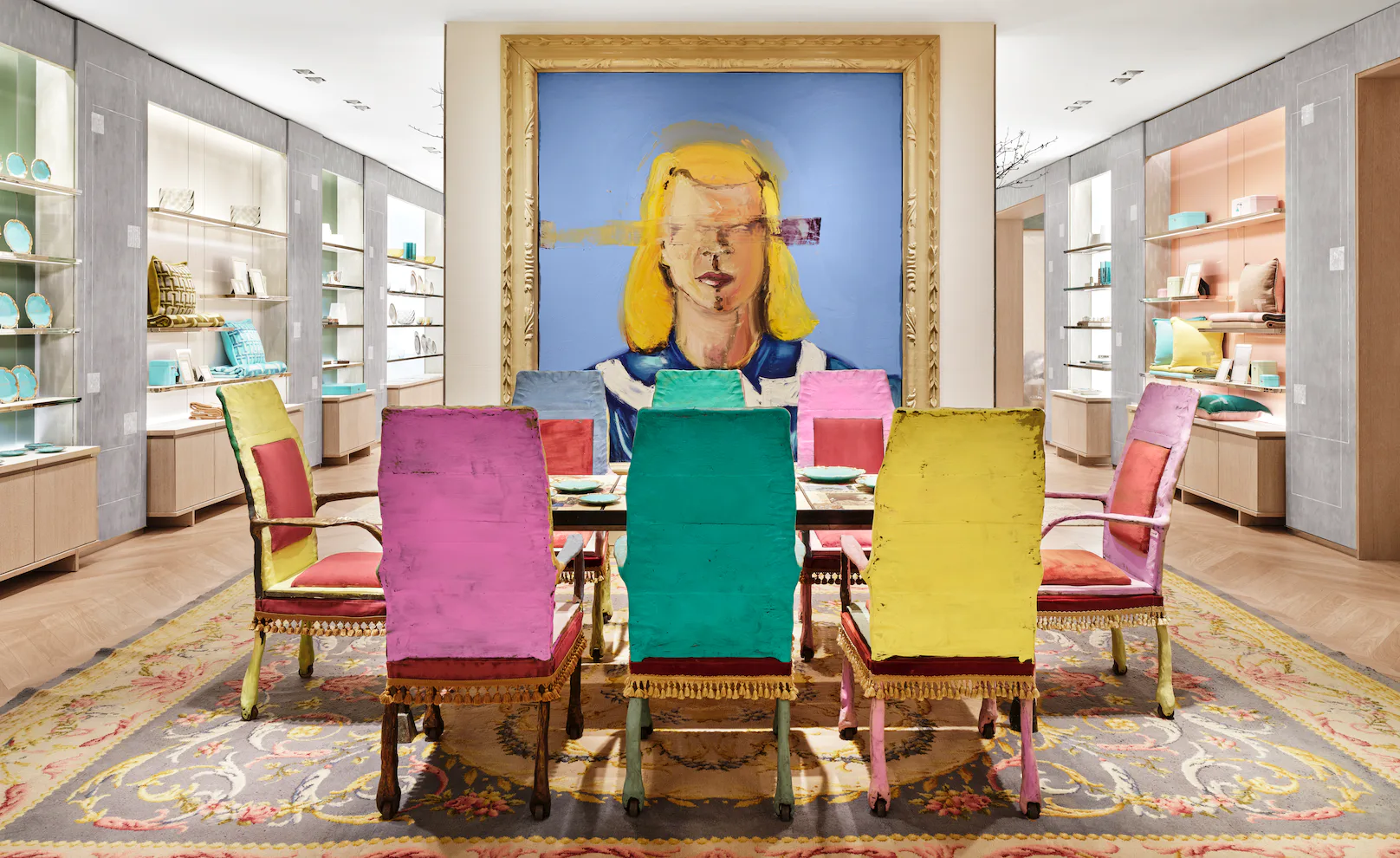
Julian Schnabel’s “Blind Girl” hangs behind his installation on the sixth floor. The dining table was one Schnabel created for his personal residence, Palazzo Chupi, in New York. On the table are Tiffany blue plates with gold edges that Schnabel also designed.
Image courtesy of: Tiffany & Co. (as featured in W Magazine)
Each floor has its own, unique flavor… tailored to what is offered there. Throughout, custom-woven area rugs and pale oak parquet flooring replace the former wall-to-wall carpeting. Rather than dark paneling, there are now walls of white marble and mirror, as well as artisanal lacquer and fabric. Special sculptural display cases were tailored to each of Tiffany’s special collections by legendary designers including Elsa Peretti and Paloma Picasso.
CEO and president Anthony Ledru said (courtesy of Vogue Business), “It won’t be just a jewelry store, but a ‘cultural phenomenon’ showcasing incredible architecture, as well as cutting-edge art and design.” He continued, “It used to rank in the top five attractions in New York, alongside the Statue of Liberty and the Empire States building. We’d like to get back there soon. We call it a Landmark, because for us it’s more than a flagship.” Very true.
